Cat — Miacidae
A long, long time ago, one of the most popular pets today would look much different than it does now. Cats’ ancestors, Miacids, resembled today’s martens and lived in trees. They would get down only when looking for prey. By the way, these ancient animals are ancestors not only to felines but also to dogs, bears, and even seals.
Whale — Indohyus
As you might already know, the blue whale is one of the biggest aquatic mammals on the planet whose length sometimes reaches 80 feet. But few people are aware that the “parent” of this underwater giant is a raccoon-sized animal called Indohynus who not only lived on the land but was also a true vegetarian. Over time, the body shape of the Indohynus changed greatly because the animal had to find protection underwater in order to hide from predators.
Raccoon — giant Hyaenodon
One of the cutest creatures on the planet, raccoons, can boast their kinship with one of the most horrible and ancient animals on Earth called Hyaenodons. It’s well-known that the teeth of these formidable creatures had the ability to self-sharpen, and the Hyaenodons themselves sometimes grew up to 13 feet in length.
Goat — Andrewsarchus
Since ancient times, goats and sheep have been considered one of the kindest and most easily tamed animals. However, their ancient relative would unlikely agree to cooperate with humans so easily because, some time back, the formidable Andrewsarchus was considered to be one of the biggest mammal-predators whose weight could sometimes reach a ton.
Tortoise — Archelon
Archelons were the true giants of the animal world — their weight would reach the weight of today’s elephants. Though giant tortoises died more than 60 million years ago, big species still can be seen in the Indian Ocean and even on the shores of North America. However, scientists are quite skeptical about it, saying that it’s unlikely that these species come from the epoch of dinosaurs because they wouldn’t have been able to survive it.
Sloth — Megatherium
It’s not for nothing that sloths got the name they have — these slow, clumsy, and kind animals spend most of their lifetime sleeping. The giant ancestors of sloths also couldn’t boast a quick reaction — not only were Megatheriums as big as today’s elephants, but they could also weigh more than 4 tons sometimes.
Pig — Entelodont
The extinct ancestors of the famous pig Babe were formidable creatures that procured food for themselves with the help of sharp fangs and extremely modest intelligence. However, even the poor mental abilities of Entelodonts, also known as “terminator pigs,” were enough for these animals to be able to roam the open plains of China, Europe, and even North America for several millennia in a row.
Boa — Titanoboa
The ancient relative of all modern boas, the formidable Titanoboa, once lived in Latin America. The 40-foot length and colossal weight of this extinct snake didn’t prevent the Titanoboa from preserving its surprisingly peaceful personality — it is known that the giant boa fed itself exclusively on fish.
Possum — Thylacosmilus
Possums are small animals that currently inhabit both North and South America. These harmless creatures are often displayed in zoos, however, their ancestor, which looked similar to a saber-toothed cat, would not likely agree to live in this place. The animal’s keen hearing compensated for its relatively poor eyesight, while the Thylacosmilus’s upper fangs continued to grow throughout its life.
Perhaps the animal’s unusual appearance sparked rumors that the formidable ancestor of possums could somehow survive until now. A similar creature is occasionally seen in Africa, South America, and even on the shore of the Sea of Azov.
Koala — Diprotodon
Diprotodons, or giant wombats, used to be one of the most unusual representatives of the Australian fauna. These animals reached the size of modern hippos and could weigh up to 3 tons. Koalas, which were mistakenly considered the relatives of bears for a long time, are the descendants of these giant vegetarians today.
Shark — Megalodon
Sharks have been considered to be one of the most dangerous aquatic predators for a long time, but their ancestors would certainly look like even more formidable creatures to us. The size of these prehistoric gigantic sharks sometimes reached the size of a 5-story building, while the specifics of the megalodon’s body allowed it to even live in fresh water.
Rhino — Paraceratherium
The relatives of modern rhinos, Paraceratheriums, were mentioned in old Russian fairytales and legends because their habitat was located right between China and the Balkans. Moreover, the fairytale creature not only shows up in history but also in the cinematography — battle vehicles from the Star Wars movie saga were almost fully copied from the image of this ancient mammal.
Horse — Macrauchenia
It’s hard for a modern person to imagine a horse who suddenly lost its trunk as the result of evolution. However, it was this part of the body that the ancient relatives of modern ponies, donkeys, and zebras possessed. Macrauchenias looked really strange compared to saber-toothed cats and gigantic koalas.
Giraffe — Samotherium
The prehistoric ancestors of giraffes, called Samotheriums, used to live in the territory of modern Ukraine and Moldova. At that time, the future giraffes didn’t have such long necks — this distinctive part of their bodies appeared later as a result of evolution. It is believed that the males with the longest necks received more attention from the females.
Hen — Tyrannosaurus
The T-Rex is one of the most famous dinosaurs on our planet. The image of the popular creature from the prehistoric jungle in the movie Jurassic Park made it recognizable all over the world. Although the appearance of this giant creature doesn’t resemble the appearance of a bird, the DNA of the Tyrannosaurus is largely similar to that of modern chickens. Believe it or not, today’s scientists are seriously discussing the probability that the main scourge of the primitive planet Earth was in the same bloodline as our feathered friend the chicken.

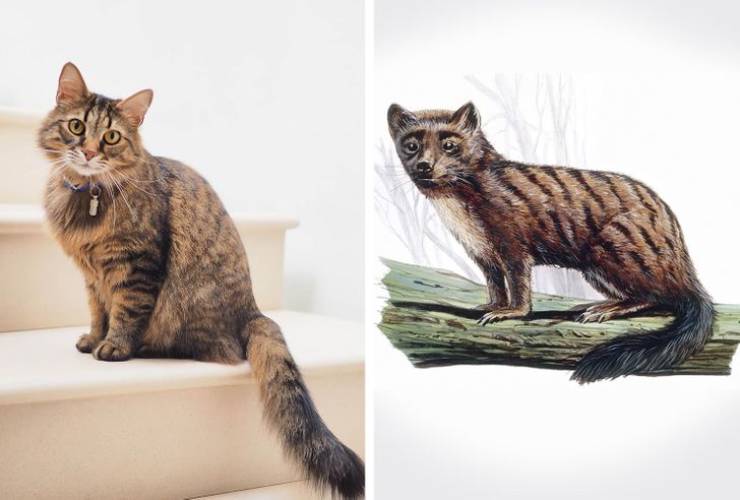
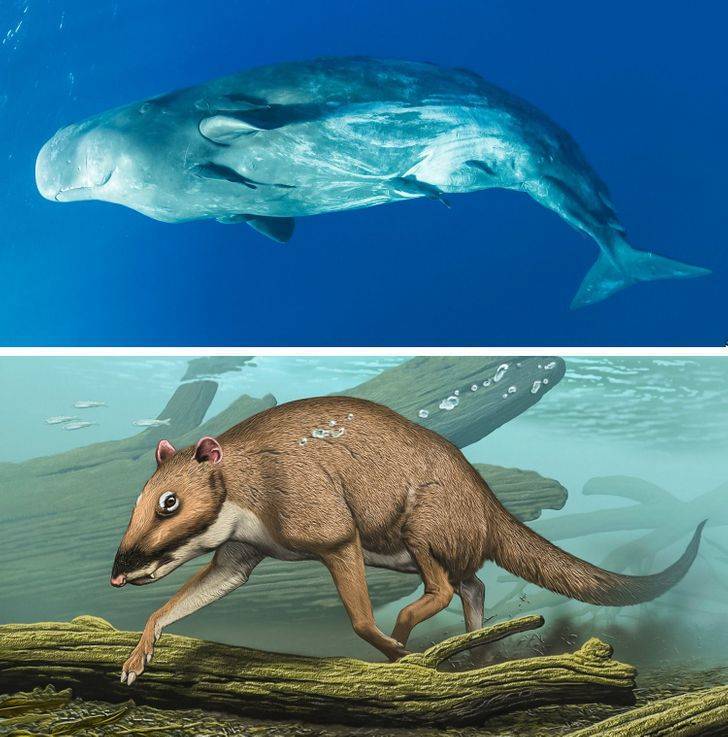

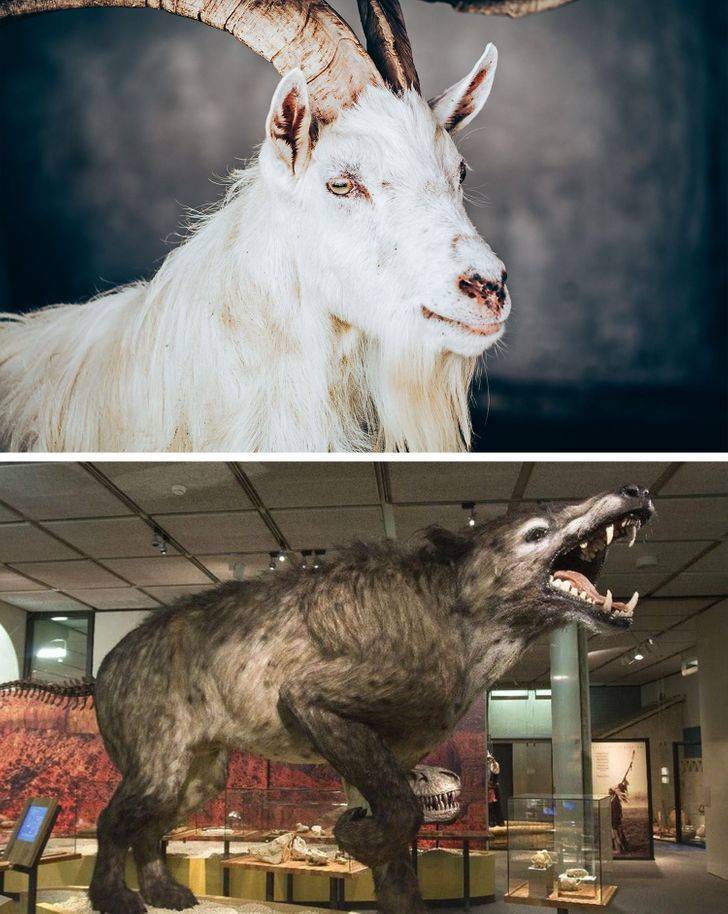
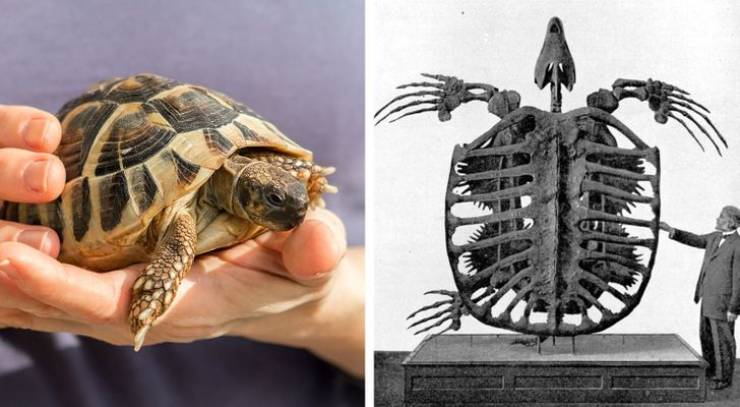
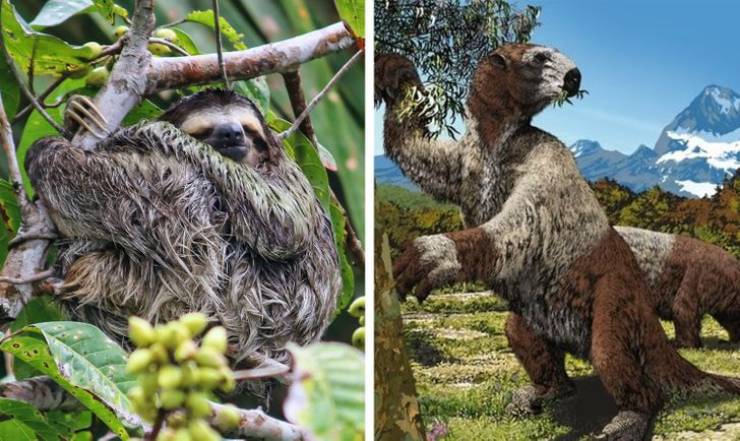

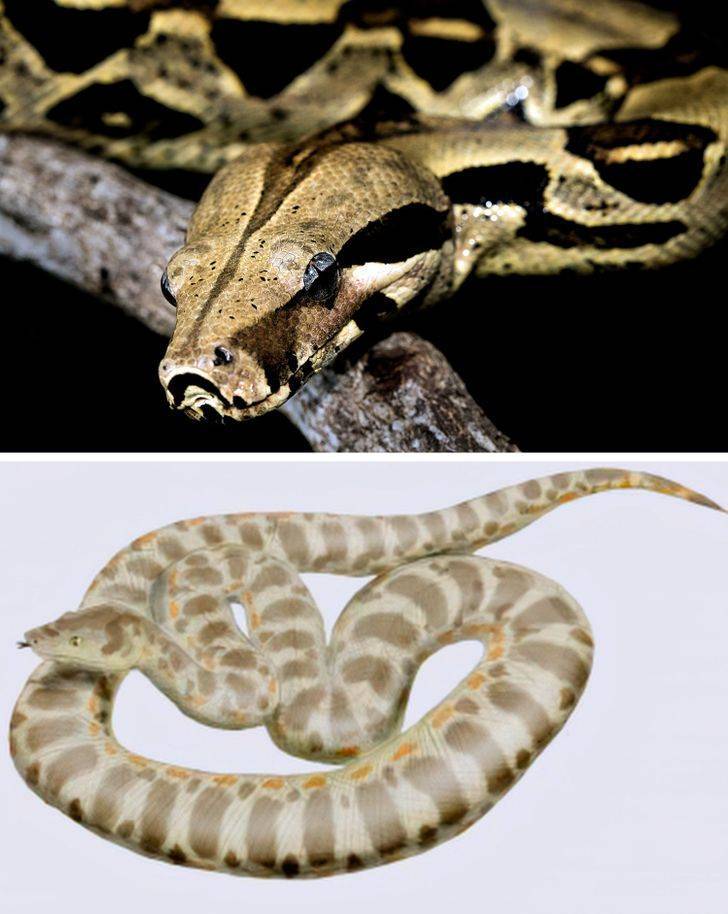
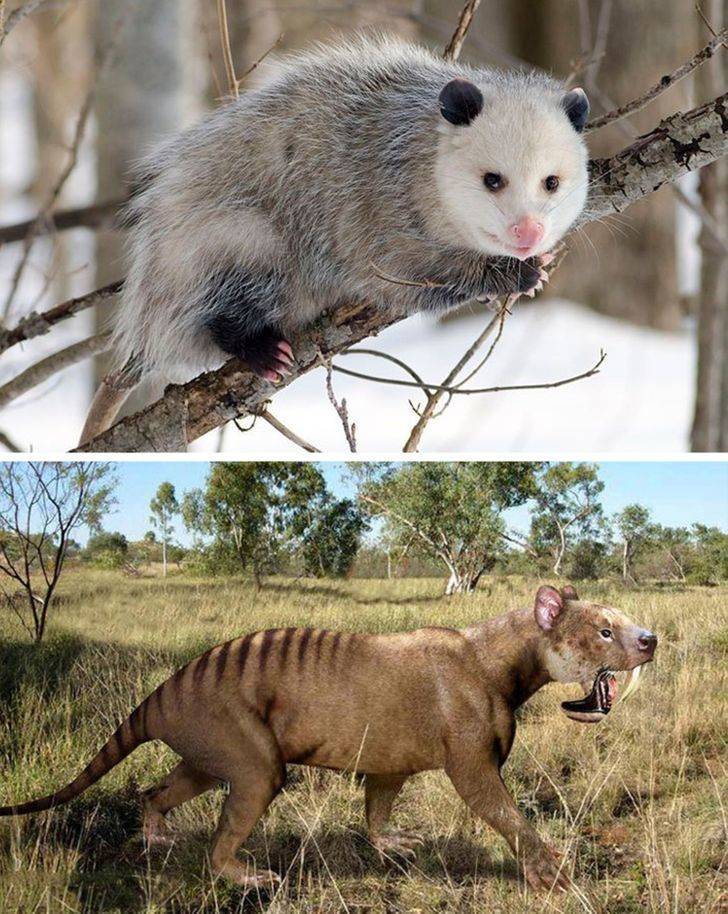
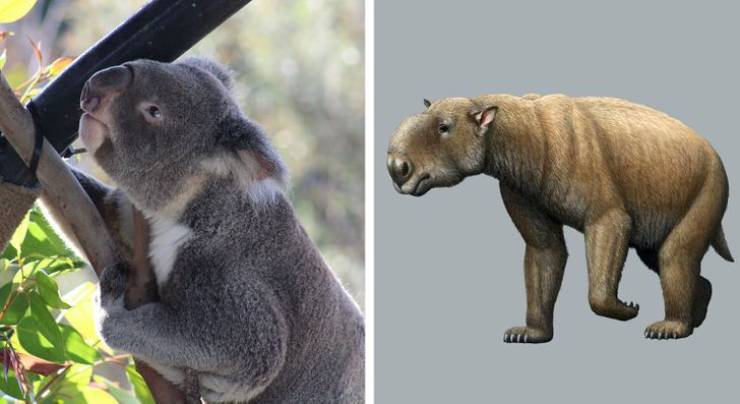
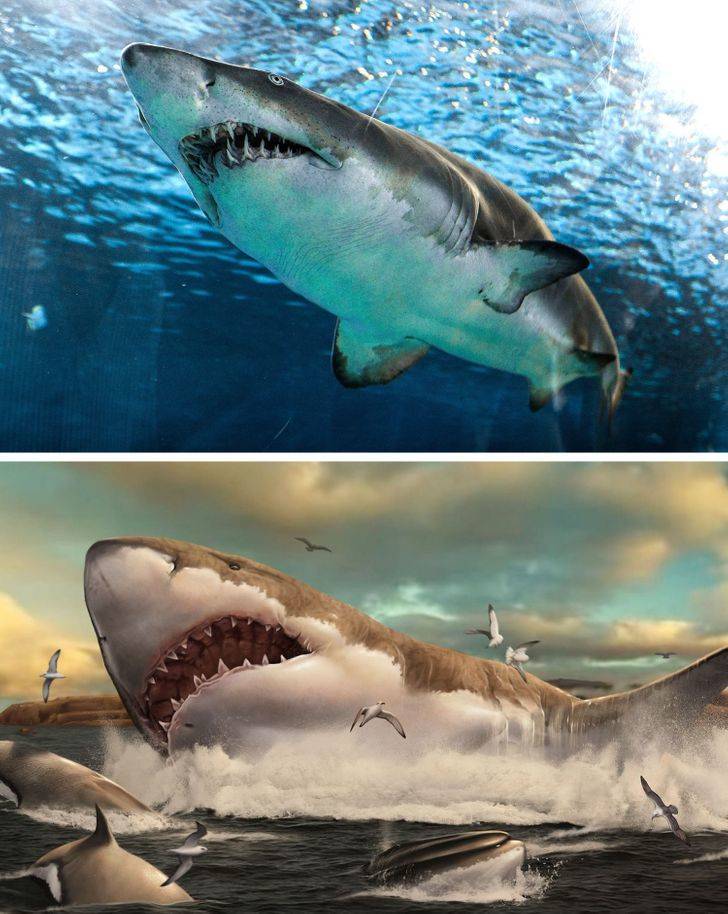
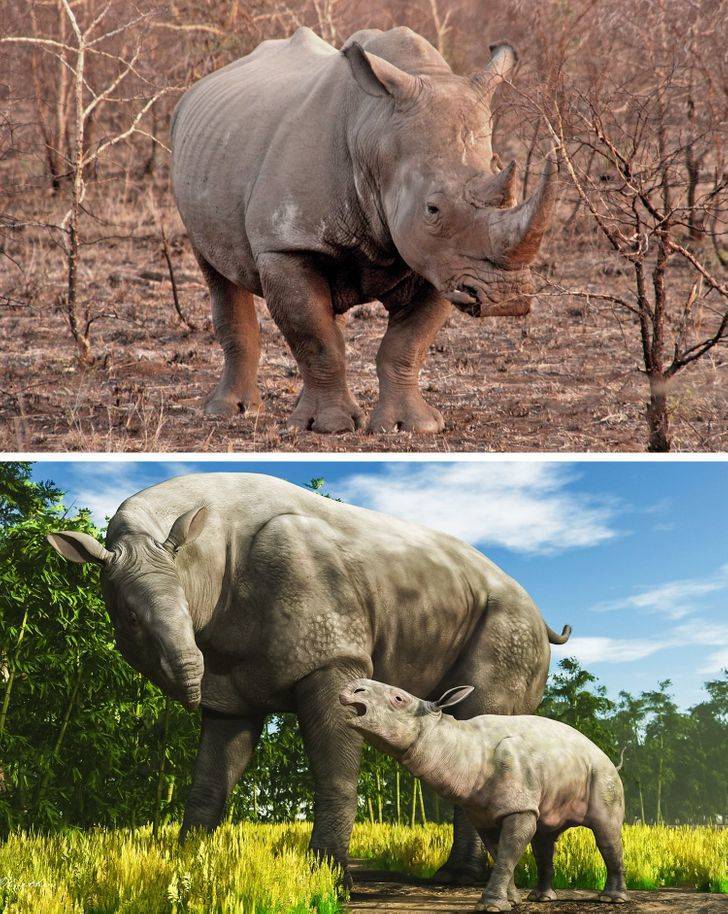
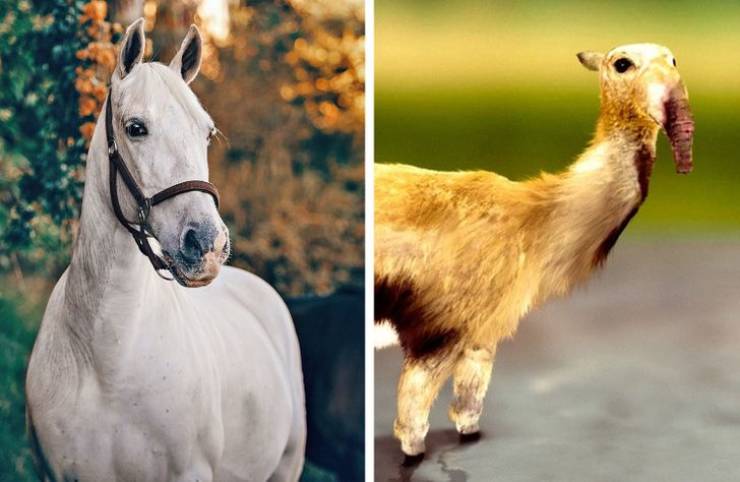
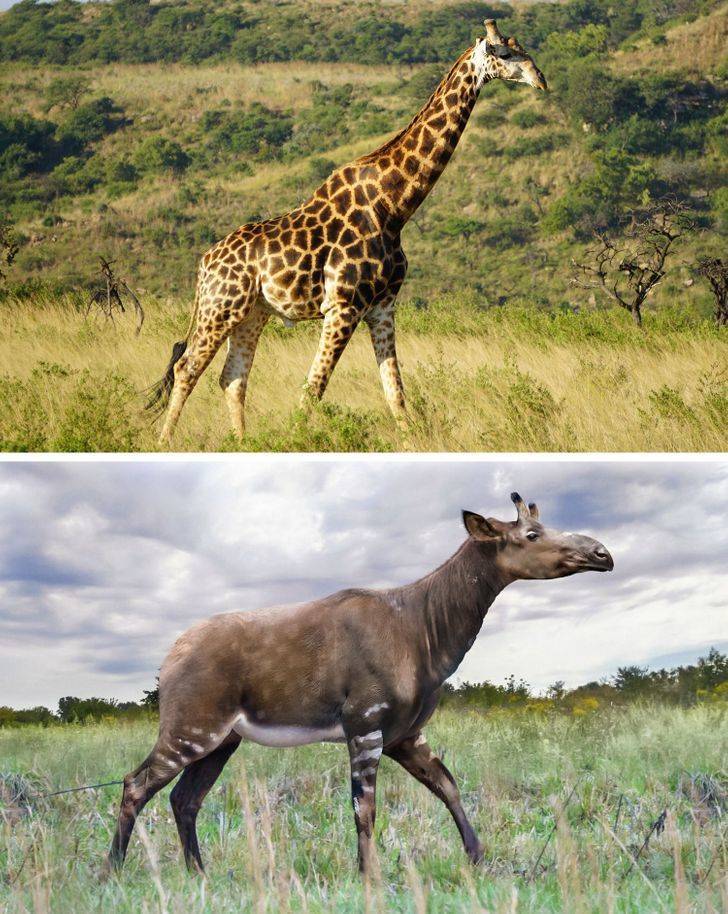
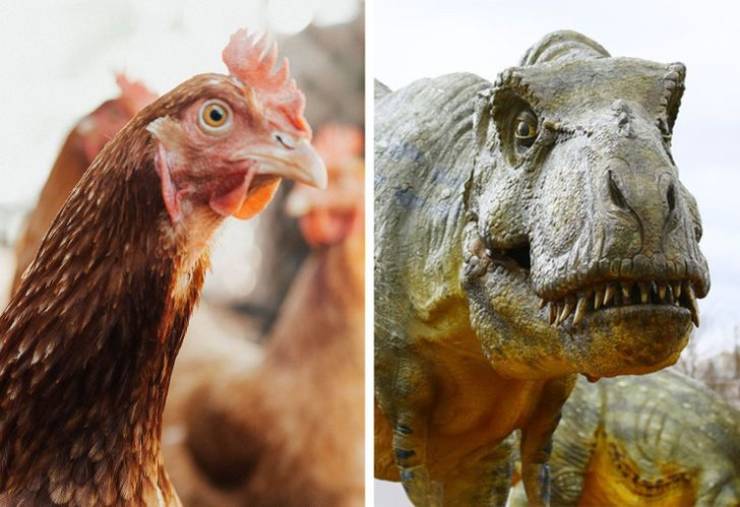



Probably thinks the earth was created 5000 years ago or something
I think it's 6000 years old in that fairytale book.
Which version of that Fairy Tale book? It's been selectively re-edited dozens of times for convenience.
*Evolution kicks in!
Hen: 'Well, cr#p!'
They all have such perceived personality for animals that have never been seen.
#15 DNA of the Tyrannosaurus?? No, I don't think so...